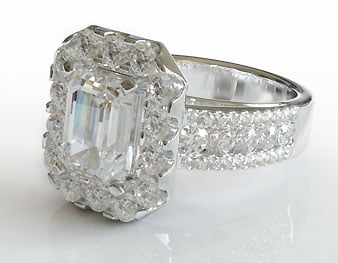Wait wait wait!
You guys are talking (writing) like CAD always makes crappy jewelry
and that poor quality and design is changing the industry for the
worse, just now!
I have been a goldsmith for over 30 years and I have ALWAYS had to
deal with crappy jewelry.
Cheap, poorly designed, difficult to wear, jewelry has been here
since time began.
Today’s CAD/CAM is just a substitute for the cheaper labor of Hong
Kong that jewelers in the 80’s had to compete with.
There were incredible things being made in Asia at the time, but
most of it was junk. I would go to the mall and see that same junk at
all the “Fast Food” jewelry stores. They were my competition and they
made business very hard.
In the end CAD is no different than any other tool.
In skilled hands it shines, in poor it is lacking.
It reminds me of the argument between goldsmiths of hand fabricated
versus carve and cast. An old one, I know, but essentially the same.
like politics, the differences are here to stay.
With equal skills being compared, the only measurable differences
between CAD/CAM and hand fabricated seems to be surface
characteristics and metallurgical structural differences both being
artifacts of the casting process.
Now the casting process is how the vast majority of jewelry is made
today from the largest factories to the smallest shops whether or
not the wax was carved or “machined”. High quality casting has always
taken into account these differences. Slightly thicker cross
sections. Cast in multiple pieces so they can be polished and
assembled later, things like that.
In other words, a casting made and finished with the same level of
skill set as hand fabricated will be equal in the eyes of the
customer, if not in the eyes of goldsmiths.
Just for giggles sake take a skeptical look at Metalsmith magazine.
Go back as many years as you can and you will see hundreds of
examples of totally unwearable stuff that stretches the imagination
for the very definition of jewelry! Aluminum and feathers at an art
fair is my definition of cheap AND hard to wear. And much of that is
fabricated!
Sam in San Jose

